I am keeping the oil boiler in place. It's only 11 years old and it's nice to have a backup in case the pellet boiler ever goes down. I also wanted to keep it in the event that I sell the home. Some potential buyers may not like not having the oil heat as that's what we are accustomed to in New England. Also the oil boiler will be doing my DHW in the summer. I have an indrect tank.
I did not get a bulk hopper. I have room for it and I'm aware of the state rebate program. I'm going to run the numbers and see if it makes sense. For now it's picking them up at the local stores with my brother's pickup truck and lugging them down the bulkhead stairs to put them on a pallet to feed the boiler once a week. I don't mind doing this. It provides a little extra excercise that I probably need anyway. Plus when my son gets a little older I'm hoping it becomes somewhat of a father/son bonding ritual, getting the pellets every August/September and bringing them into the basement together.
It's been fairly warm lately so I imagine that I won't be needing heat for another week or two. The next challenege is determining what pellets to use. All my pellet stove friends and the stove people on here seem to believe that the brand/quality of the pellet makes a big difference in actual performance. Marc said that I should be able to use the cheaper big box pellets and get decent results. I sure hope so because the Fireside Ultra's at Home Depot are much cheaper than the brand name stuff the stove guys rave about.
I will be posting some pics tonight.
I replaced my boiler as it was older and had about 3 leaks, I was so happy trashing it at the local dump, I hated the ideal of oil heat.
I understand your reservations if you were to sell your house.
If your indirect water tank is ~80 gallons or over get a heat pump or a new new tank with a built in heat pump and hopefully never run your oil burner ever again.
I bought the standalone Nyle heatpump and added it to a new Caleffi 80 gall solar tank.
It has an indirect coil for heating the tank from the boiler and a 220v electric element (which I hope to never use).
The Nyle is connected to bottom drain and this is all I have used to heat my hot water in a house with 5 adults.
The Nyle is also 120v so I can run it from my smaller generator if we get a power cut.
Have a look at my Windhager pictures I posted yesterday in another thread.
I have had a pellet stove for a few years now and stored my pellets in the basement. The enjoyment of unloading ~100 40lb bags and then stacking them soon fades.
My 2 teenage/adult sons had the knack of not being around when we did get them home or had been delivered.
Its like getting the kids to cut the grass, they soon lose interest.
I have a silo / hopper and I hope more local firms to me offer bulk delivery, I hope to not touch a bag again.
I have no reservations or concerns about the reliability of the Windhager boiler, it looks a fine piece of equipment.
It is the manual labor required to load bags of pellets is one of the factors that will ultimately limit pellet boiler acceptance within the general public.
I always used the super premium pellets in my Harman insert stove as they greatly reduced how much soot and how quickly the glass door got dirty.
Interesting how this works on a pellet boiler.
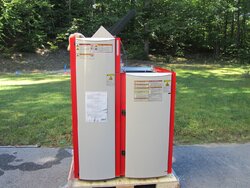
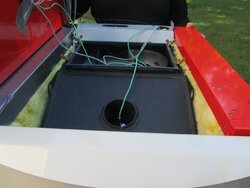
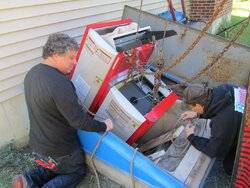
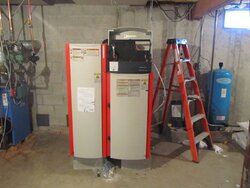
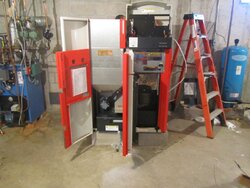
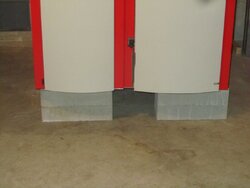
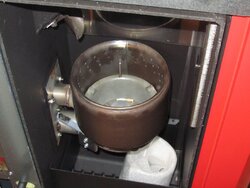









 It worked so well for the part of last heating season I had it fired up I can't wait to see how it does for a whole seasons worth of heat and hot water.
It worked so well for the part of last heating season I had it fired up I can't wait to see how it does for a whole seasons worth of heat and hot water.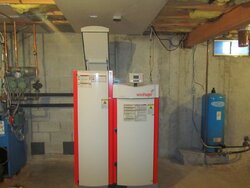
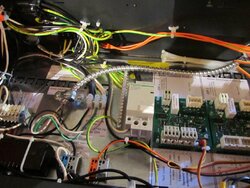
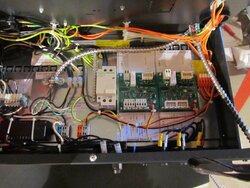
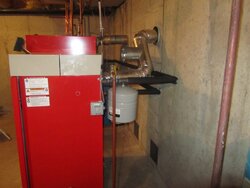
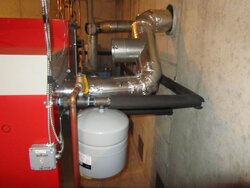
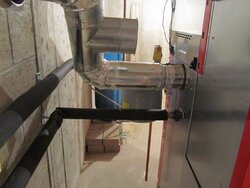
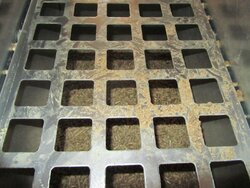
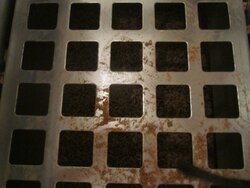
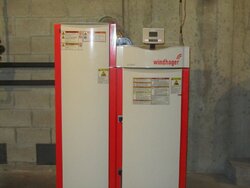
 The close clearance stove pipe that duratech puts out is called DVL and that is air cooled. Not sure why not insulated.
The close clearance stove pipe that duratech puts out is called DVL and that is air cooled. Not sure why not insulated.